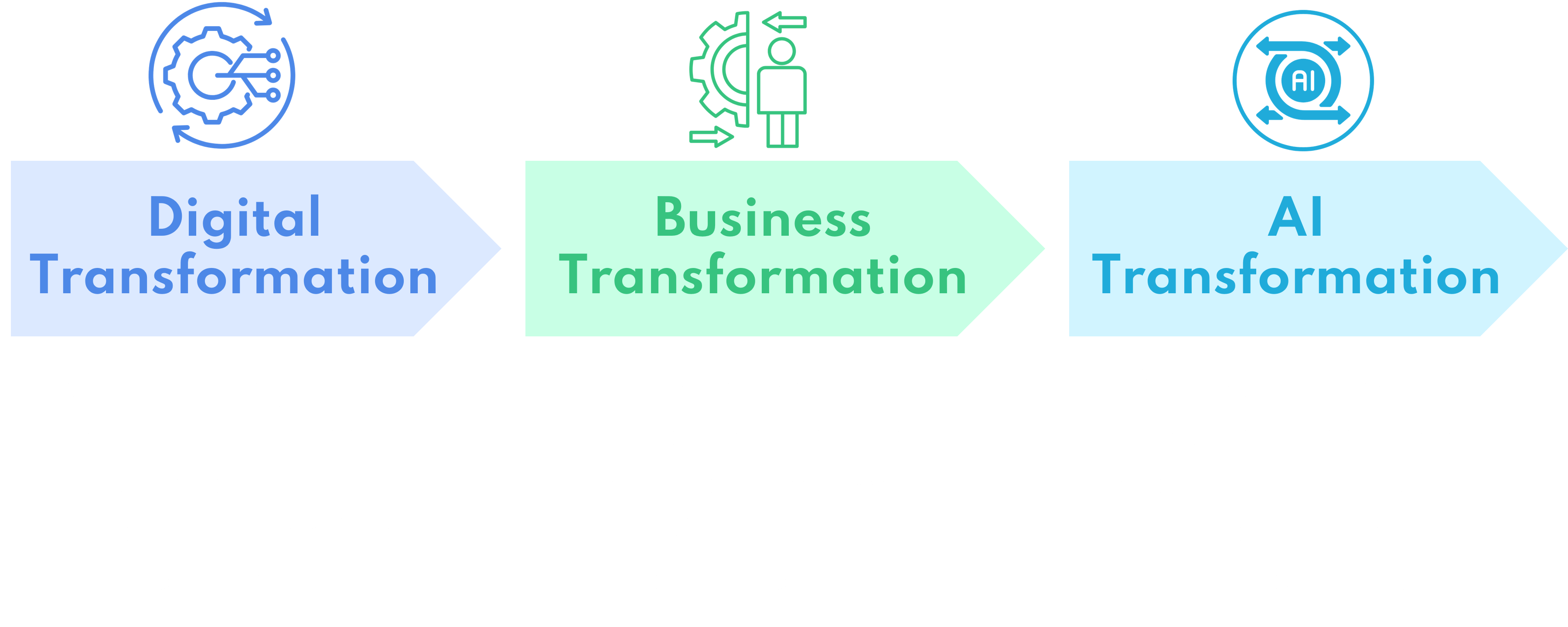Empowering your business with innovative IT solutions that drive growth.
Business Transformation in the Era of Digital Disruption
Business transformation has become a necessity in today’s rapidly changing digital economy. Companies can no longer rely on traditional business models, manual processes and old enterprise solutions; they must embrace digital strategies, AI-driven automation, and intelligent analytics to remain competitive. having said that, business transformation goes way beyond simple adaptation of newer technologies—it requires fundamental changes in business operations, culture, and customer engagement.
This series of blogs will explore the key areas of business transformation, the challenges organizations face, and how SAP solutions help businesses achieve successful transformation. This series of blog posts will be of special interest to all SAP customers who are looking to move from SAP ECC to SAP S/4HANA.
What is Business Transformation?
Business transformation is the strategic overhaul of business processes, models, and technologies to drive growth, enhance efficiency, and stay ahead of competition. Unlike digital transformation, which is focused primarily on technology adoption, business transformation is focused around operational and strategic shifts.
Key Differences Between Business Transformation & Digital Transformation

Pillars of Business Transformation

Business Process Optimization
At the heart of any transformation is to make things work better and faster. Businesses need to take a step back, look at their current processes and workflows, and figure out what’s slowing them down. It’s all related to inefficiency reduction , reducing costs, and making sure every aspect runs smoothly. Business process transformation tools like Signavio help to map, analyze, optimize, and execute business processes efficiently, maintaining continuous improvement and collaboration.
Data Transformation and Management
Data is everything, but only if it’s accurate and useful. Businesses need to clean up their systems, decide what’s worth keeping, and make sure data moves seamlessly into the new setup. A well-planned data transformation ensures companies aren’t just hoarding numbers but actually using them to drive decisions and improve operations.


AI Innovation
AI and machine learning aren’t just fancy buzzwords anymore - It is changing the way businesses run. From automation of repetitive tasks to analysis of trends, AI helps companies work smarter. It’s not about replacing people, but making them equipped to make better decisions faster and with more confidence. The SAP AI Agent accelerates business transformation by workflow automation, optimizing decision-making, and enhancing customer experiences. It uses machine learning and predictive analytics to drive efficiency, reduce risks, and improve compliance.
Organizational and Cultural Change
Embracing new technology is good, but it won’t work unless people are ready to leverage it. Business transformation means getting everyone on board, rethinking how to get work done, and making sure leadership sets the right path. It’s less about forcing change and more about making an environment where people actually want to adapt and grow.


Focus on People and Collaboration
Technology, after all, is just a tool—people make transformation successful. Teams need to work together, communicate freely and openly, and make sure no one is left behind. If top management and the employees aren’t aligned, even the strongest strategy will fail. Collaboration and transparency aren’t optional; they are essential.
Enhanced Customer and Supplier Experience
A smooth-running business is not only good for employees but also great for customers and suppliers. The ease in work and strong relationships go hand in hand. By simplifying processes and bringing in the right tech, businesses can create an exceptional experience that keeps customers satisfied and suppliers engaged. Afterall, transformation isn’t just about software—it’s also about people.

Challenges in Business Transformation
Despite the benefits, companies face several challenges when undergoing business transformation:

Legacy Systems Blocking Agility
Outdated, disconnected ERP and CRM systems slow down transformation.

Data Silos Reducing Efficiency
Companies struggle with fragmented data across departments.

Lack of Integration Between Business Units
Disconnected teams and inconsistent processes slow down decision-making.

Lack of AI
Creates inefficiencies, slow decision-making, and missed opportunities.
The Shift to AI Transformation – More Than Just Digital Evolution
It feels like we’re stepping into a whole new era-AI Transformation-which isn’t just an upgrade to digital transformation but a shift of its own. While businesses have spent decades digitizing their internal processes and customer interactions, AI has changed the game completely. Here are the different stages of transformation.
Evolution From Digital to AI Transformation

Digital Transformation (Going Digital Inside the Company)
Businesses started digitizing their internal operations-things like ERP, logistics, finance, and warehousing. The goal was to make processes more efficient without changing how businesses fundamentally worked. This relied on mainframes and on-premises systems, making everything smoother but still very structured.
Business Transformation (The Customer-Focused Digital Shift)
Companies shifted from just improving internal operations to enhancing how they interacted with customers. Tools like CRM, CDP, MAP, and customer portals became essential for engaging with consumers. This was powered by SaaS and cloud-based systems, making businesses more customer-centric and connected.
AI Transformation (The Rise of AI-Driven Businesses)
Now, it’s not just businesses using AI-customers are too. AI agents are matching buyers and sellers in real time. The shift is driven by technologies like LLMs, AI agents, and RAG (Retrieval-Augmented Generation), making interactions more intelligent and automated. Instead of just using AI to improve processes, companies are embedding AI at their core, creating systems that can think, adapt, and personalize on their own.
Ready To Transform your Business?
Ensuring seamless Integration and enhanced Operational Efficiency for your business
Book a Free Consultation


